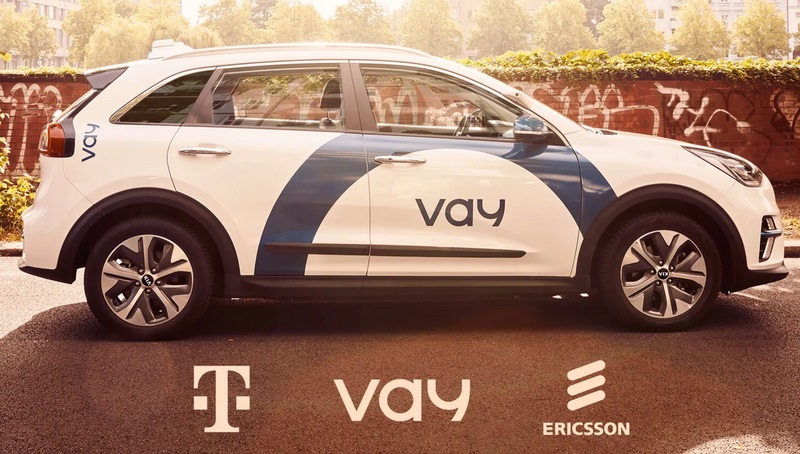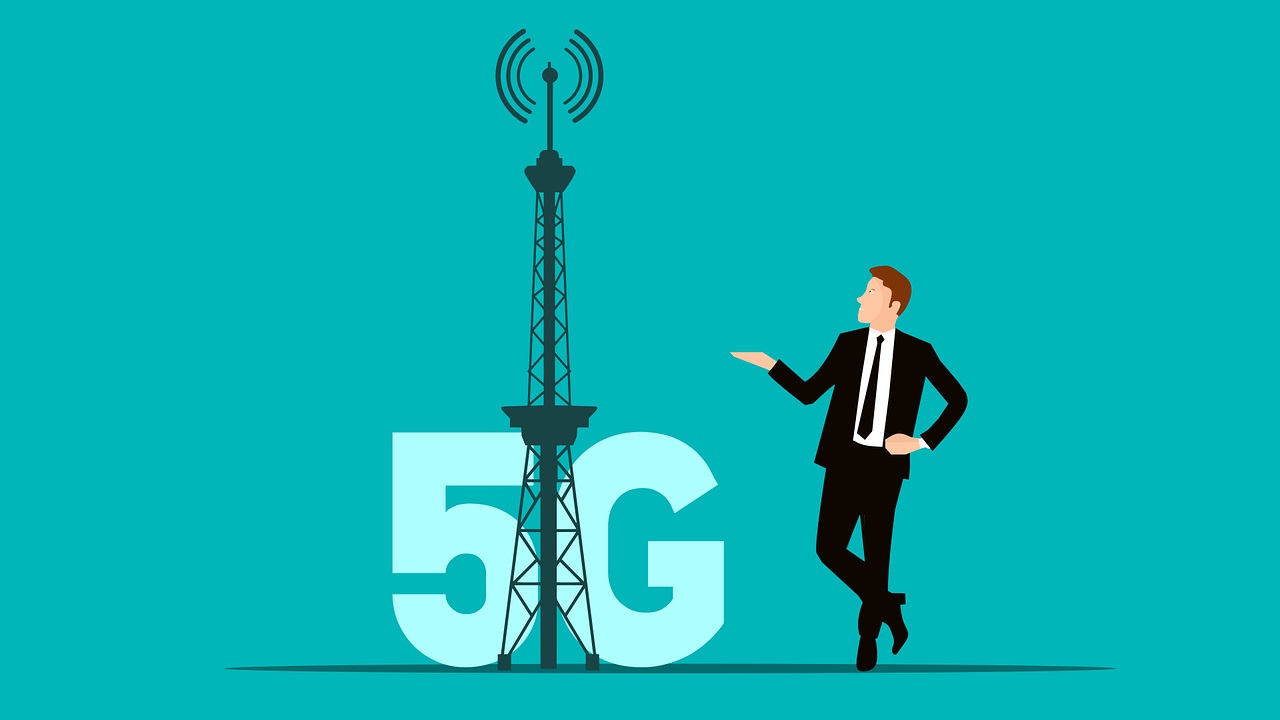Al Mobile World Congress 2023 (MWC), Orange, Telefonica e Vodafonein collaboration with Ericssonare demonstrating how advanced features of the 5G mobile network can be exposed and made easily usable by the global developer community.
What Ericsson and others did at MWC 2023 in Barcelona, between 5G network and common APIs
The solution adopted at the Mobile World Congress is the demonstration of how the telco sector is working with aggregators such as Ericsson-Vonage to expose new network capabilities to application developers. Furthermore, the demonstration foresees the adoption of common APIs between the networks of the different operators within the scope of the initiative GSMA Open Gateway.
An example? Make HD interactive video in mobile gaming and productivity applications.
Additionally, according to Ericsson, exposing advanced 5G network capabilities through common APIs will allow operators to leverage new ways to monetize this technology and to rapidly deliver new services on a global scale.
“We are thrilled to be part of this project, which connects the world of mobile networks with the global developer community,” he said Erik Ekudden, CTO and SVP of Ericsson.
“This is a paradigm shift that will put network capabilities at the heart of enterprise digital transformation. This will enable mobile operators to monetize 5G by exposing advanced network features through easy-to-use APIs.
With 5G, we have an innovation platform unlike any we have ever seen before, which together with the Vonage Communications Platform will create a global network platform that can support operators in their growth ambitions.”
The goal to reach
The goal is to see traders use the same API QoDdefined, developed and documented in CAMARAan open source project led by Linux Foundation in collaboration with GSMA.
“We at Orange are excited to introduce together with our colleagues the first Live Network API (CAMARA) for innovative new services at enterprise or consumer level. Having open network APIs from different operators, harmonized and accessible from one place, eliminates friction between software developers and unleashes innovation and creativity for many use cases,” he said Laurent Leboucher, CTO of the Orange Group.
“Working with open network APIs creates a virtuous loop of continuous feedback, which leads to constant improvement and development of new innovative features. Orange has been active for many years in encouraging and supporting the development and exposure of APIs, in particular through the Orange Developer Portal. The benefits are numerous, with a broad range of APIs enabling developers to co-innovate and grow their business.”
To echo, the words of Enrique Blanco, Global CTIO, Telefonica SA.: “The trial we are bringing to the MWC together with the other main European operators and Ericsson is a very important step in laying the foundations for a new business model based on opening up the functions of the new generation of networks to application developers. This is an industry move, in partnership with the GSMA through the GSMA Open Gateway initiative, a true catalyst for highly demanding network-capable services such as immersive communications, web3 and metaverse-related services.
The need to deliver these premium services that are perfectly tailored to meet the needs of business and consumer customers cannot be predicted any other way than within an interoperability-based framework. This also means relying on the provision of common and streamlined APIs through CAMARA, available to developer communities through major marketplaces. The telecommunication industry is today starting a journey that presents challenges, but also many opportunities not only for itself, but for society, so it is the right way to go.“
And finally those of Santiago Tenorio, Director of Network Architecture at Vodafone, who said: “Today’s mobile networks have vast capabilities that go far beyond basic connectivity. Open network APIs that leverage the power and scale of our network are an opportunity for true innovation. Vodafone is providing its product creators and software engineers, as well as third-party developers and companies outside of Vodafone, access to these new features to create meaningful new services.
Whether it’s helping banks detect unusual transactions, enabling safer flight paths for emergency drones, or extending smartphone battery life, innovation is returning to the net.”
Cloud Gaming and Open Network APIs
Il cloud gaming it serves as the perfect showcase to demonstrate the potential of open networking APIs.
“Standardized across carriers, simple to use, and cost predictable, they allow application developers to take control of network QoS,” he said. Olivier Avaro, CEO of Blacknut. “With over 600 premium titles playable from the cloud, Blacknut not only requires a robust cloud streaming stack, but also an efficient network with the right bandwidth, latency and jitter metrics. Open network APIs give us the ability to control the end-to-end user experience and deliver a consistent, stable and superior gaming experience, even on the go.”
Velchamy Sankarlingam, President of Product and Engineering di Zoomsaid: “We are excited to join forces with Ericsson and selected mobile operators at Mobile World Congress 2023 to demonstrate uninterrupted, high-quality transmission for Zoom Meeting mobile users, leveraging Ericsson’s open QoD APIs for take full advantage of the advantages of 5G mobile networks.“
But not just cloud gaming. 5G is about to be widely used for the teledriving.
Teledriving on the 5G network by Ericsson, Deutsche Telekom and Vay at MWC 2023
Ericsson, Deutsche Telekom and the teledriving company Vay will present at the MWC 2023 in Barcelona a remote driving system, called precisely teledriving.
Operation is very simple: before and after the customer takes control of it, the car is remotely driven by a teledriver. The demonstration will take place at MWC 2023, with a remotely driven car at Berlin taking advantage of technology Low Latency Low Loss Scalable (L4S) and the latency of 5G networks.
“L4S can make fundamental improvements to Vay’s teledrive technology. This feature allows you to detect network congestion in advance, stabilize latency and avoid the loss of data packets” he commented Thomas von der Ohe, co-founder and CEO of Vay.
“The main benefit of L4S is the improvement of network capacity utilization and thus maintaining the data transmission quality at the best possible level, while reducing the redundancy level of the network at the same time. Furthermore, by reducing the amount of networks needed per car, we can reduce costs and increase the coverage of our service area, even in the most rural areas. This brings Vay one step closer to its goal of a large-scale, sustainable door-to-door mobility service.”

Other Statements
“Deutsche Telekom continues to innovate with partners to evolve the 5G network and its potential for human-scale applications. Demonstrating the benefits of L4S quality of experience for Vay’s teledriving technology brings us closer to the era of large-scale driverless mobility services,” he echoed. Kaniz Mahdi, SVP Technology Architecture & Innovation, Deutsche Telekomwhile for David Hammarwall, Head of Product Area Networks di Ericsson: “Just a few years ago the capabilities highlighted in this teledriving demo with DT and Vay would have been beyond imagination.
This innovative use case demonstrates the ability of 5G connectivity to remotely manage a vehicle in real time, safely and securely. We are continually pushing the limits of L4S technology, to showcase the role of Ericsson’s time-critical communication capabilities in changing the way we work, live and socialize.
These capabilities will dramatically elevate the quality of experience for existing use cases, such as cloud gaming, self-driving vehicles, and drones. They will also enable emerging applications such as augmented/virtual reality (AR/VR) that operators can offer to consumers and businesses.”
We can therefore understand how these demonstrations are confirmation of the power of the 5G network, a power that Ericsson seems to have understood very well and wanted to bring to MWC 2023.















Leave a Reply
View Comments